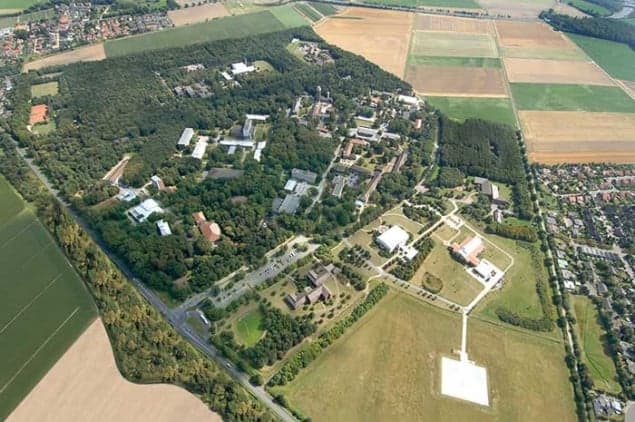
Atomic clocks in France, Germany and the UK have been used to perform the best-ever confirmation of time dilation as set out in Einstein’s special theory of relativity. The clocks have been connected recently by optical-fibre links, which let the devices be compared to each other to an extremely high degree of statistical resolution. The work was done by an international team of physicists that says the test could still be improved further by several orders of magnitude.
The study uses the “Robertson–Mansouri–Sexl” (RMS) framework for violating special relativity. RMS assumes that there is a preferred reference frame in which the average speed of light measured on a return journey (there and back again) between two points is constant in all directions. RMS contradicts special relativity in all other reference frames by assuming that the average speed of light of a return journey varies according to a formula involving the velocities of those frames relative to the preferred frame.
Different directions
As the Earth rotates, different points on its surface have different velocities relative to the centre of the Earth. Points at different longitudes, for example, move in different directions, while points at different latitudes move at different speeds. As a result, sending signals between atomic clocks at two different points on Earth could reveal RMS violation.
The measurement involved optical lattice clocks at LNE-SYRTE in Paris, the PTB standards-lab in Braunschweig and the National Physical Laboratory (NPL) near London. The clocks are connected by two different fibre links – one running from NPL to LNE-SYRTE and the other from PTB to LNE-SYRTE.
The protocol for comparing the frequencies of optical clocks at two different locations can be described as sending a frequency signal from one clock to the other, where it is received and then sent back. In the RMS framework, the shift in frequency of the returned signal will contain a term that involves the difference between the velocities of the atomic clock locations. Because the Earth rotates once a day, the velocities of the two locations – and therefore the RMS frequency shift – will oscillate with a period of 24 h.
Time dilation
In one test, the team compared clocks located at LNE-SYRTE and NPL for 60 h. The researchers also compared clocks at PTB and LNE-SYRTE for 150 h. These comparisons let the team place an upper limit on the RMS violation of special relativity at about one part in 100 million. Specifically, this puts limits on the violation of the special-relativity concept of time dilation, which spells out how the elapsed time between two events can be different when measured by observers in two different situations.
This latest result is a factor of two better than the previous limits on time-dilation violation, which was made using fast moving ions as clocks. Writing in Physical Review Letters the team states: “As clocks improve, and as fibre links are routinely operated, we expect that the tests initiated in this Letter will improve by orders of magnitude in the near future.”



